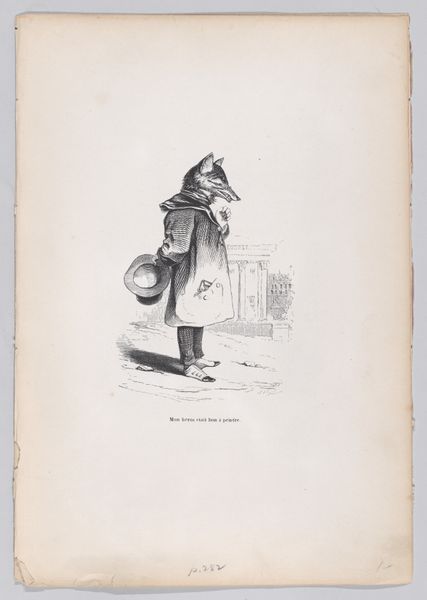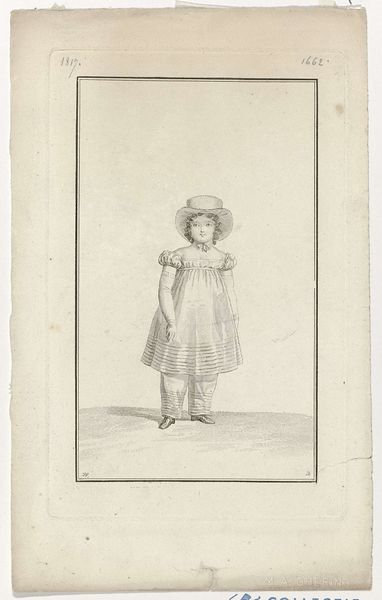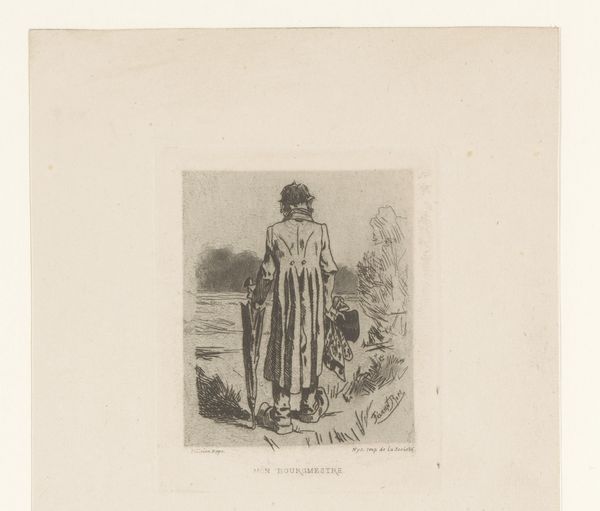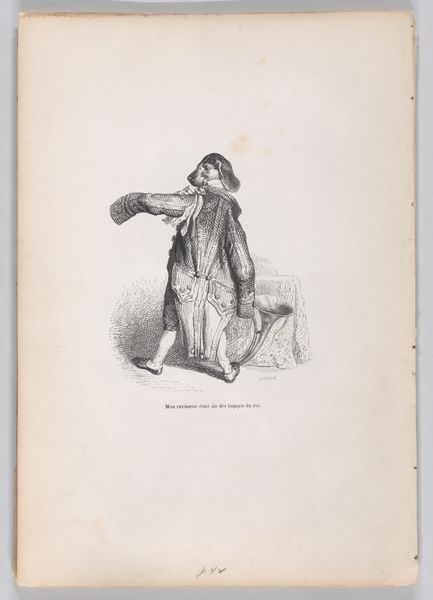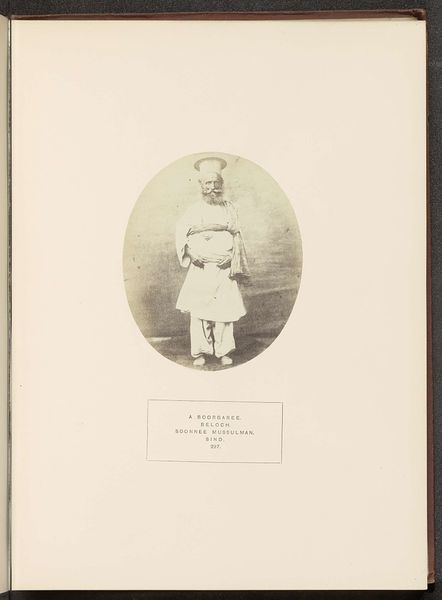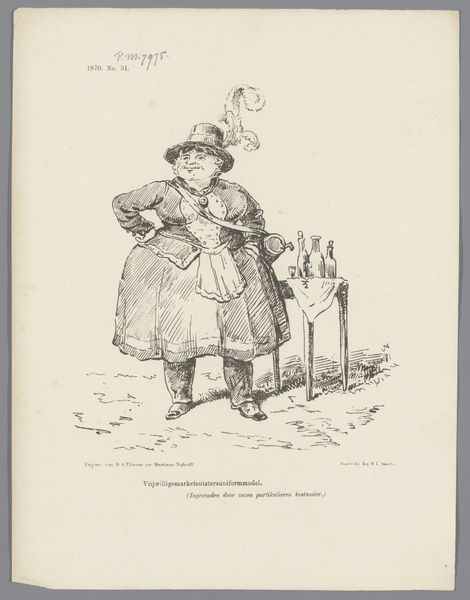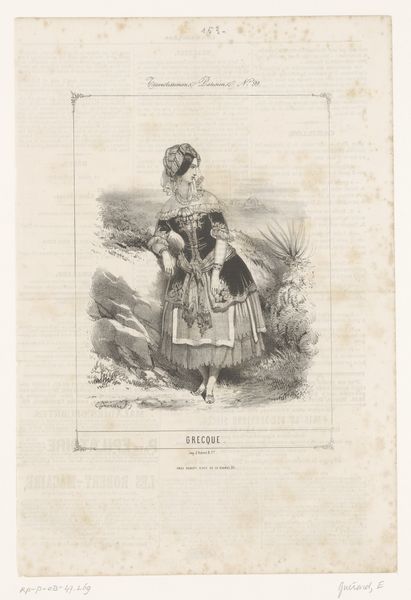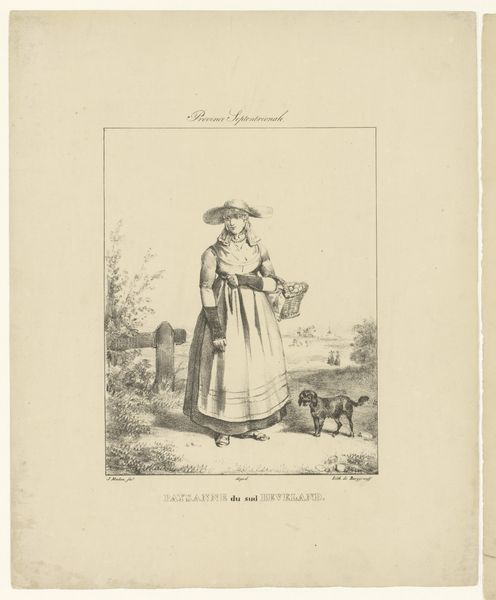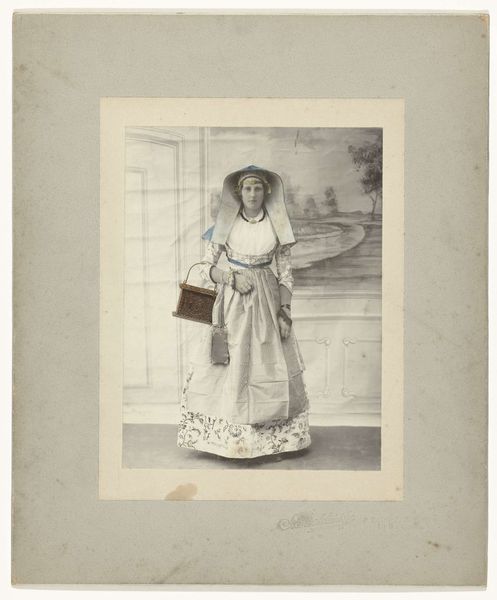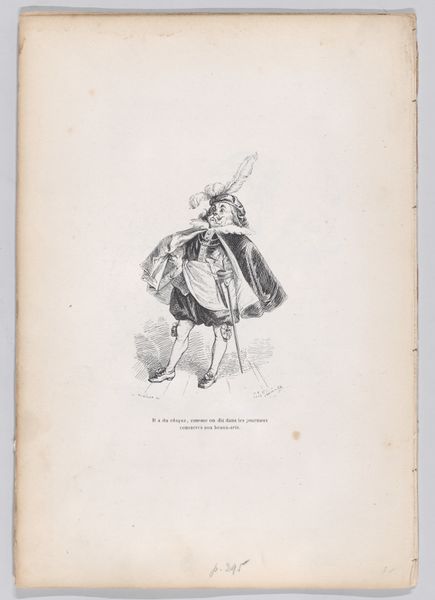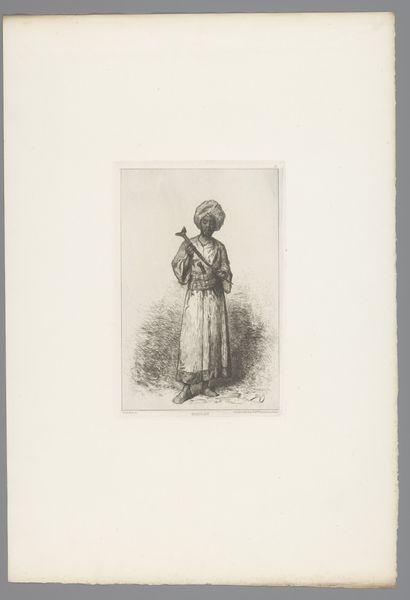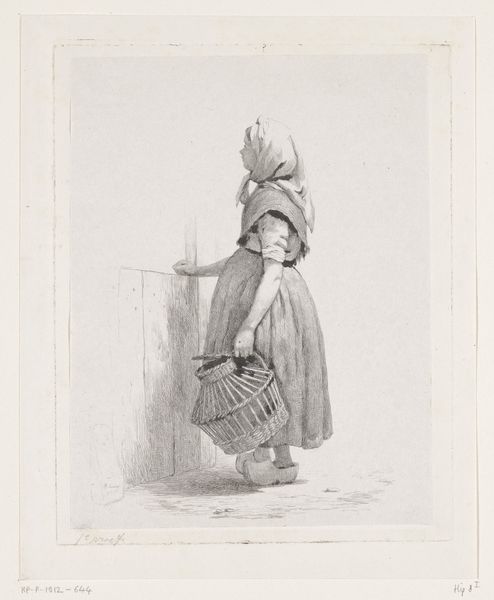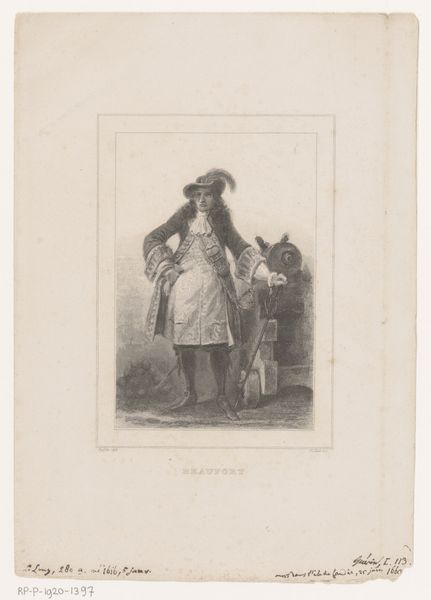
"I ordinarily opened the ball with the prettiest villager" from Scenes from the Private and Public Life of Animals 1832 - 1852
0:00
0:00
drawing, lithograph, print, paper, ink
#
drawing
#
lithograph
# print
#
caricature
#
paper
#
ink
#
romanticism
#
genre-painting
Dimensions: Sheet: 10 5/16 × 7 3/16 in. (26.2 × 18.2 cm)
Copyright: Public Domain
Curator: This is “I ordinarily opened the ball with the prettiest villager” by J.J. Grandville, created sometime between 1832 and 1852. It's a lithograph, ink on paper. Editor: It's… unsettling. The combination of the traditional clothing with that hare’s head. It's almost like a Victorian nightmare. What statement was Grandville trying to make? Curator: Grandville was known for his caricatures, particularly the La Caricature and Le Charivari publications. This image comes from a larger series critiquing French society using animal-human hybrids to satirize different social types. We should also remember the socio-political context of France in the early to mid-19th century. The July Revolution, the rise of the bourgeoisie…it all created fertile ground for satire. Editor: So the "pretty villager" with a hare's head - what does she represent in that context? Is it about the exploitation of rural communities, maybe, or the performative nature of social gatherings? I'm curious about the material constraints of printmaking at this time – what was the labor like producing these lithographs on paper? Were they widely accessible or aimed at a specific class of consumer? Curator: Precisely! And the reproducibility of lithography allowed these images to circulate widely, influencing public opinion and shaping political discourse. Think of the means of production – the lithographic stones, the presses, the workshops employing artisans… it reveals a complex web of labor and industry. And, remember, this was a period where Romanticism dominated the art world. The grotesque could still be "beautiful." Editor: It makes me wonder about the workshops where these prints were made. Who were the printmakers? How were they paid? What was their relationship to Grandville? Considering the subject matter, were they aware of, and complicit in, the social commentary embedded within? This blending of Romanticism and harsh satire creates an interesting tension. It's not simply mocking, it also taps into a deeper vein of societal anxiety. Curator: Absolutely, and these satirical publications had a massive influence. They contributed to political and cultural conversations shaping the emerging identity of France during that period. Editor: Understanding the social forces is so important. The work reveals the power of visual culture to critique, provoke and, perhaps, instigate change. Thanks, this was fascinating! Curator: Agreed, looking at these prints opens a window into the past!
Comments
No comments
Be the first to comment and join the conversation on the ultimate creative platform.
